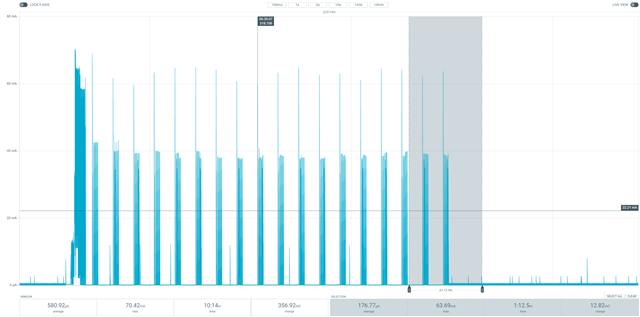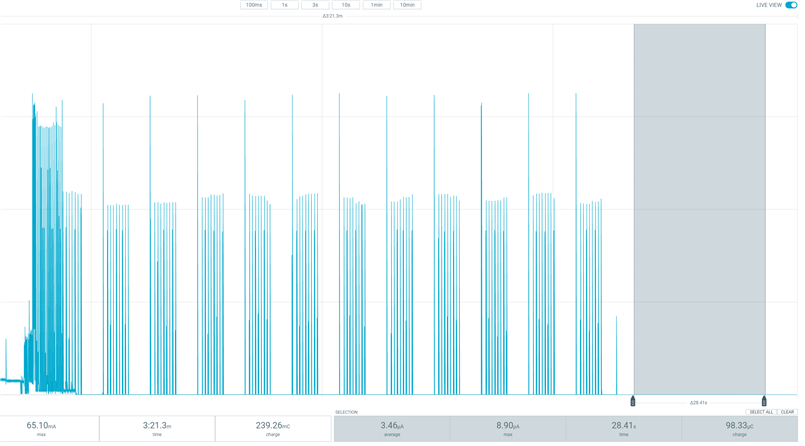Hi there,
We are running a power consumption test using PSM mode, and we are however not measuring the 4uA floor current as expected.
We are requesting a active time of 6 minutes, and TAU time of 30minutes. We are also using eDRX.
However after the active time has passed, the device does not go into a low power state. There also appears to be a lot of noise:

I can confirm that the network does assign us the correct timers, as we get the following message in:
+CEREG: 1,"0001","01A2D002",7,,,"00100110","11100000"
Kindly advise what can be the issue here?




